Are you fed up with mowing your lawn every week, or do you want to create a pollinator and bird paradise? You might want to consider creating a small prairie to attract beneficial insects, birds, and wildlife. Prairies have a natural look, so if you like a formal looking garden, this may not be for you. By establishing native plants, they will naturalize or spread over time to fill in
You will have to prep the area to see what kind of soil conditions are in the area. You will want to determine whether the area is dry, wet, or well-draining. If there are plants or lawns in the area, pull the plants out and try to snuff out existing grass with cardboard to kill the plants. You could use a selective herbicide to kill the grass, but many people like to practice natural methods. Once the existing plants in the area are gone, you can start cultivating the area.
Once the soil is prepared, you can start to plant native species in the area. When you are looking into native plants, you might want to go to a Wildlife Preserve or park to see what is naturally growing in the different areas. While you search for plant well-suited for your micro-prairie, remember to look for their moisture tolerances.
Prairie plants tend to naturalize or spread, so plan for extra spacing around each variety. A general rule of thumb is to plant a perennial grass between every perennial flower. Grasses make up a large portion of prairies by creating dense habitats, food sources, and easy establishment. Some examples of perennial grasses you can include are Little Bluestems, Big Bluestems. Switch Grasses, Prairie Dropseed, Side Oats, Reed Grasses, and Miscanthus. As you search for perennials to add color and attract the pollinators, compare their size to the grasses you have chosen. You do not want to plant a short-statured plant alongside a large grass that might shade it out. Some great perennials that attract pollinators are Beebalm, Lanceleaf Coreopsis, Prairie Smoke, Joe Pye Weed, Milkweed, Butterfly Weed, Aster, Coneflower, Liatris and Black-eyed Susan.
To maintain your prairie every year, you will want to leave the plants standing over the winter months to provide food and shelter for wildlife. In the spring, once temperatures start to reach 50 degrees consistently, you can start removing the plant debris. You may want to consider a light layer of hardwood mulch or straw to help combat weeds for the first few years of establishment. Eventually, the plants will expand and fill in the open areas. Watch for invasive species like Reed Canary Grass and Garlic Mustard. By creating a little piece of wildlife paradise, you will invite species of insects and birds that you have never seen before!

